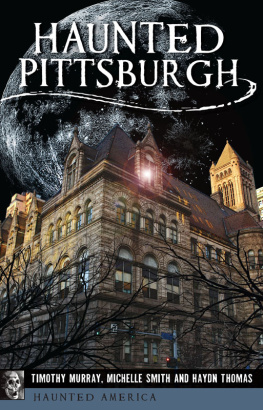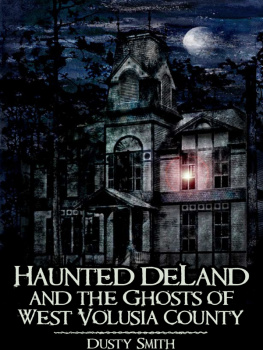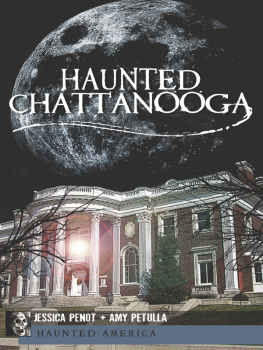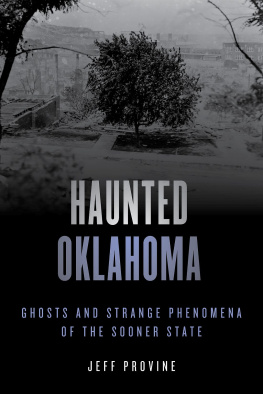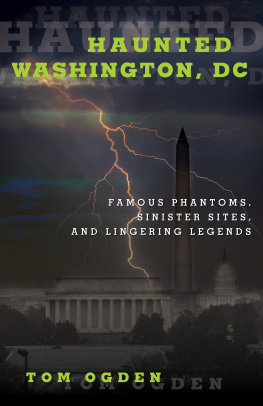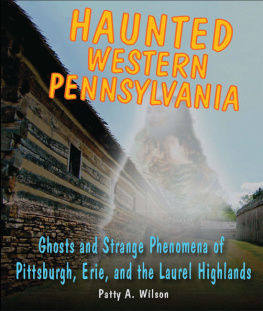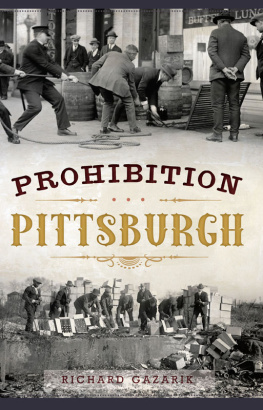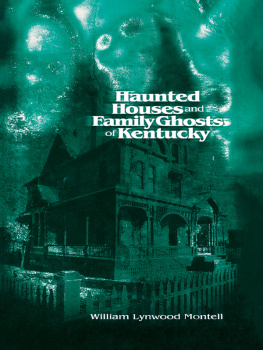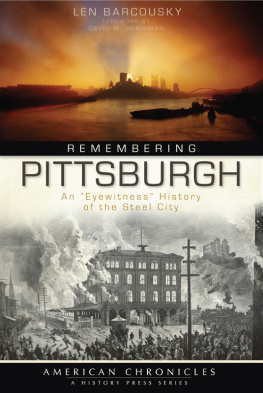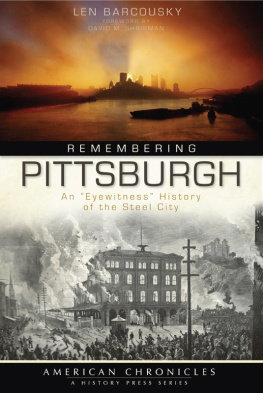


Published by Haunted America
A Division of The History Press
Charleston, SC
www.historypress.net
Copyright 2016 by Tim Murray, Michelle Smith and Haydn Thomas
All rights reserved
First published 2016
e-book edition 2016
ISBN 978.1.62585.779.8
Library of Congress Control Number: 2016941432
print edition ISBN 978.1.46711.993.1
Notice: The information in this book is true and complete to the best of our knowledge. It is offered without guarantee on the part of the authors or The History Press. The authors and The History Press disclaim all liability in connection with the use of this book.
All rights reserved. No part of this book may be reproduced or transmitted in any form whatsoever without prior written permission from the publisher except in the case of brief quotations embodied in critical articles and reviews.
CONTENTS
INTRODUCTION
A writer named James Parton once called Pittsburgh hell with the lid off. Well let you decide how accurate that is, but we can say this without fear of contradiction: Pittsburghs character was forged in pig iron furnaces so hot that men and women sometimes forgot their fear of hell. Any town that has lived through the turbulence Pittsburgh has experienced cannot escape its ghosts, and Pittsburgh is teeming with them. Pittsburgh has a North Side and a South Sidethis book explores its dark side.
In the middle of the eighteenth century, the land that would become Pittsburgh was among the most hotly contested places on earth. On July 9, 1755, a British expedition led by Major General Edward Braddock marched toward the Point, where the Allegheny, Monongahela and Ohio Rivers meet, to kick the French out once and for all, but the French and their Native American allies intercepted and routed the British. That night, the French and the Native Americans marched British soldiers captured in the battle to Fort Duquesne at the Point. There, on the banks of the Allegheny facing present-day Heinz Field, the Native Americans tied a dozen British soldiers to stakes and burned them alive.
In that cauldron of blood and wickedness was Pittsburgh born, and the taint of evil lingers still.
Many of this books tales are from one especially turbulent erathe time when Pittsburgh was bursting onto the world stage as the industrial capital of America. That era happens to coincide with the time that Pittsburgh was officially spelled without the h. In 1890, the U.S. Board of Geographic Names ordained that the h be dropped, and it was not until twenty-one years later that the protests of Pittsburghers were heeded and the h was reinstated.
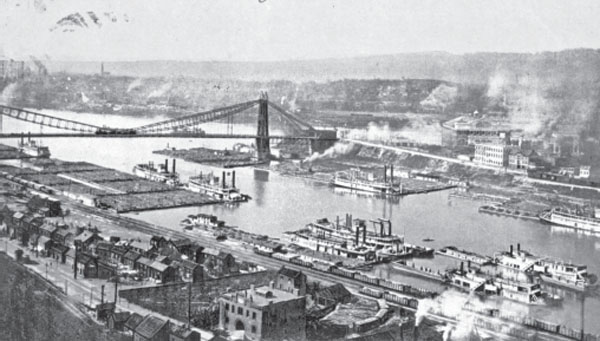
Point Bridge, over the Monongahela River. New York Public Library Digital Collection.
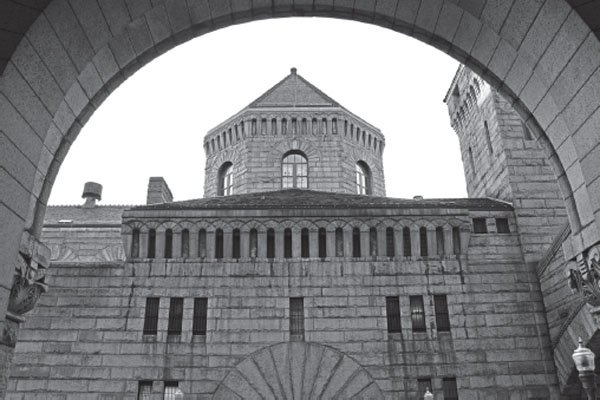
The old Allegheny County jail. Tim Murray.
The rivers are Pittsburghs lifeblood, and steel is imprinted on its DNA. At one time, Pittsburgh made half the steel in America. By the early twentieth century, Pittsburgh was bursting with millionaires, but for most people, this town was a downright dangerous place. In 1905in just that one year17,700 men were killed or maimed in Allegheny County while performing industrial jobs, mostly working in iron and steel mills. That is a staggering percentage of the total population.
But sometimes it wasnt safe to stay home, either. On January 28, 1907, Pittsburgher Albert Houck came home from work to find that his wife had spontaneously combusted. Her body was reduced to charred cinders and ashes, and nothing else in the room was burned. Mr. Houck found her sprawled out on a table, and not even the table was singed.
But waitthe stories get even stranger, even creepier. Come, journey with us back to the Gilded Age of ragtime and robber barons, of boastful mansions bathed in gaslight and of a time when the New York Times said of Pittsburgh, men of great wealth... [sprang] up from obscurity like mushrooms, and the tales of their sudden acquisitions of fortunes read like chapters from the Arabian Nights.
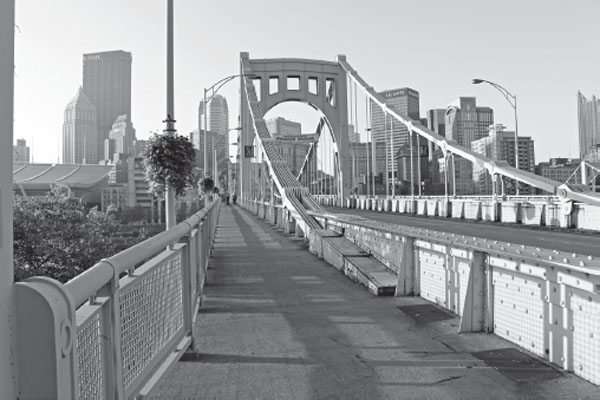
One of Pittsburghs many bridges leading into Downtown Pittsburgh across the Allegheny River. Tim Murray.
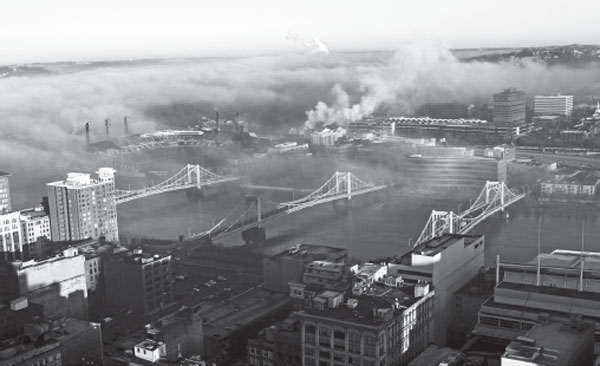
Three of Pittsburghs many bridges on the Allegheny River. Tim Murray.
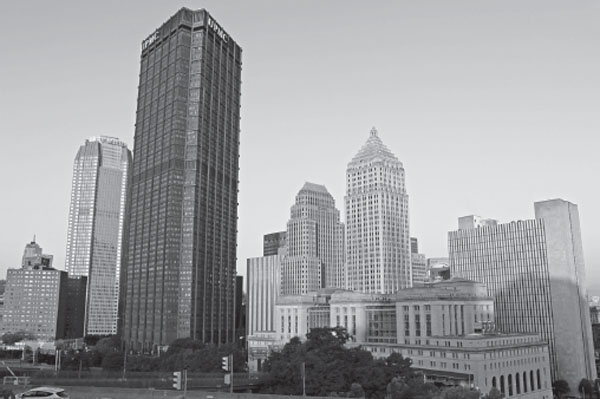
Downtown Pittsburgh, including the Gulf Building. Tim Murray.
A word about our goal in writing this book. With each passing year, many of the classic Pittsburgh ghost stories have faded from the publics consciousness. It is our mission at Haunted Pittsburgh to chronicle and preserve these stories. We are the curators of Pittsburghs nightmares, the archivists of its fears, the trustees of all things that go bump in the night in western Pennsylvania. The stories are fascinating, and they also tell us much about Pittsburghs majestic, sometimes grisly history, a history that isnt well known today. Sadly, there are all too many people who dont know there used to be a mighty steel mill in Homestead that dwarfed almost any other in the world; who have never heard of Jonas Salk, much less that he played a critical role in wiping out polio from a laboratory in Pittsburgh; who think Roberto Clemente is a bridge, Arnold Palmer is a drink and Warhol is a museum.
This is Pittsburghs storytold through the dark and twisted lens of its greatest tales of ghosts and the unexplained.
GHOSTS AND STEEL
HENRY CLAY FRICK AND PITTSBURGHS MOST IMPORTANT GHOST STORY
Western Pennsylvanias most important ghost story revolves around the man who was, arguably, the most important and, inarguably, the most controversial Pittsburgher in the citys long history. Henry Clay Frick owned a company that turned coal into coke, which was crucial in steel manufacturing. In the 1880s, he partnered with steel baron Andrew Carnegie, and Frick was put in charge of running the entire Carnegie Steel operation. How well did their company do? When J.P. Morgan bought it twenty years later to form U.S. Steel, he paid $492 million, and the new company was capitalized at $1.4 billion, making it the first billion-dollar corporation in history. If Henry Clay Frick were alive today, his wealth would be comparable to that of Warren Buffettand both would be paupers compared to Carnegie, one of the two wealthiest people in history (the other was John D. Rockefellerin todays dollars, they would both be worth more than $300 billion).
Henry Clay Frick; his wife, Adelaide; and their four children lived in a foreboding Italianate mansion in what was the richest neighborhood in the world, Point Breeze on Pittsburghs east end. Their house had a nameClaytonand their neighbors had names like Heinz, Mellon, Westinghouse and Carnegie. Clayton is one of the last remnants of Pittsburghs fabled Millionaires Row. It is open to the public, and almost everything in it is original. It looks almost exactly as it did when the Fricks inhabited it. Some people claim one or two of them still inhabit it, as it is said to be haunted. The house has seen much sadness and tumult because its master was at the center of some of Americas greatest tragedies.
Next page
